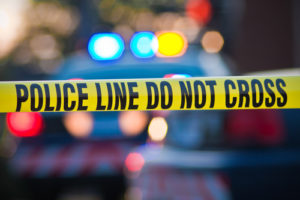Operations expert discusses 7 tips on how to manage campus emergencies and alerts.
 No one has the luxury of choosing the date and time of the next campus crisis, which is why assembling a core team to oversee campus emergency alerting must be mission critical. Understanding the dynamics of potential threats and preparing for any campus crisis makes for good policy. Therefore, exploring the anatomy of a campus crisis: who should be involved, what procedures should be followed, how best to alert the campus and what the expected response should be to multiple campus constituencies during an emergency event is the best way to be prepared.
No one has the luxury of choosing the date and time of the next campus crisis, which is why assembling a core team to oversee campus emergency alerting must be mission critical. Understanding the dynamics of potential threats and preparing for any campus crisis makes for good policy. Therefore, exploring the anatomy of a campus crisis: who should be involved, what procedures should be followed, how best to alert the campus and what the expected response should be to multiple campus constituencies during an emergency event is the best way to be prepared.
Know What “Campus” Means
A “campus” is often thought of as an area that consists of many individual students occupying seats in numerous learning classrooms. However, a high altitude view reveals more than 20,000 colleges, universities and research institutions in the world, some of which have multiple campuses under their sphere of influence.
A typical campus might:
- Span an entire state with multiple campuses
- Have 518 buildings
- Cover 15,880 acres of land
- Have an enrollment of 32,000 students
- Employ over 10,000 members of the faculty and staff
- Host over a thousand campus visitors on a normal day
- Be comprised of 15 individual colleges and schools
- Have 400 active student organizations
- Have several sporting facilities that seat tens of thousands of people per event.
Those responsible for risk management know that the prime mission of any campus is to maintain a safe indoor and outdoor environment for every constituency on that campus 24 hours a day. Unfortunately, problematic issues arise from time to time on every campus. These events require instant reaction and action.
A ticking clock waits for no one.
Not Just First Responders
Emergent events can take any form, and in the course of a year it is not uncommon to learn of a campus forced to deal with severe weather situations (snow, flooding, hurricane, tornado), an earthquake, power outages, HAZMAT situations, fire, burglary, assaults, and unfortunately much worse. In these types of situations, campus first responders obviously move quickly to manage the circumstances, but there are others on campus that must also have a prepared response plan at the ready.
Those “others” should be a formal team that supports the first responders, as well as the many constituencies attached to the campus as a whole. This team needs to provide quick and precise information to the campus and all of its constituents, including the surrounding communities. It is imperative that they communicate with students, faculty, staff, visitors, news organizations, student families and the adjacent communities.
How, what and when you communicate can have significant ramifications as any emergent event unfolds.
(Next page: Practice, messaging, communication)
Practice is Critical
A team of communicators needs to practice long before an emergency occurs! Certainly, it would be difficult to role-play every possible crisis, but by gathering this specific group together periodically to discuss their emergency methods is a solid idea.
Understanding how various emergencies tend to evolve will assist in preparing a response. Each person on the team fulfills a specific and mission critical role in assisting the campus community during a crisis. In any given emergency, things will happen fast and people are forced to sort through vast amounts of information coming from many directions. Information must be verified as pertinent, true, to what degree the situation constitutes a real threat, and how large a geographic will be impacted. It is important to convey messages precisely and know how often to update those messages, which are critical.
Everyone on campus during the emergency wants, and needs to know what is going on, what they need to do… and if they are safe. Tell them!
Making Your Message a Priority
In this day and age of social media I can assure you that hundreds of messages will be issued within minutes of any emergency. The most important of those hundreds of messages is yours!
We all remember the grade school game where the teacher whispered in the first student’s ear sitting in the front of the classroom, “Becky’s dress is red,” and then instructed each child to repeat and pass her message to the kid beside them in their row. By the time that message got to the last student in the back of the room, it had changed significantly through multiple tellings.
In the same way, managing your institution’s message in a time of crisis is a brand management opportunity, which can go well or get ugly quick. In an emergency you have to control your messaging in a timely manner and also provide regular updates so that only true messages are being received—the second you let down your guard someone else will fill the vacuum and become your unofficial voice, to your detriment.
One suggestion to see how this happens would be to do a hashtag search on Twitter of a recent or past emergency event on a campus, follow the stream of messages, and look to see how campus officials and “unofficials” messaged during the crisis—it will reveal examples of good messaging and flat-out bad messaging.
You can’t control all of the messaging but you can control your official message and do the best to protect your brand.
Communications Off-Campus just as Important
As the Boy Scout’s say, “Be prepared.” That means that an institution’s emergency and communications team must also include key first responders and campus communicators to ensure that all involved understand how each of their roles relate and support others.
There must be consensus on what constitutes an emergency and identifies the type of emergency, in order to generate the appropriate response. Emergencies vary in type and intensity, which require a codified hierarchy of actions, clearly stating who is responsible for various pieces of information, the exact messaging to be relayed, and how local media and social media aspects are to be handled.
One person should not be charged with handling all of the dissimilar functions.
(Next page: Consistency and policy)
Be Consistent
Note that emergency messaging requires consistency across local media, social media, official website, emails, and text messaging. How “the media” is to be handled throughout the duration of the event should be predetermined. A discussion with local media contacts to pre-arrange how best to communicate with them will not only help them do their jobs, but also make your own messaging more efficient when the times comes.
Having pre-prepared tweets ready to use during any lull in new information gathering will help fill information voids. Have a system to track your own social media messaging, as well as other related social media messages to help minimize unproductive interference.
Have it on Paper
Create a working document that explains the details and roles of each person on your emergency response team, which should consist of not only first responders in the area of your campus (i.e., campus police, city police, county police, state police, fire departments, hospitals and ambulance services), but also your own administrative and support “key communicators.”
Conduct an hour-long tabletop exercise periodically so the role each person will play stays top-of-mind.
Take that hour to work through a scenario of an emergency situation on a timeline of emergent events (have the campus police provide such a scenario). West Virginia University holds these periodically and has found it to be beneficial in understanding the stressful dynamics of an emergency situation and how we can best perform the important role of communicating to and protecting our campuses.
 Author Spencer Graham will present “Emergency Alert! The Anatomy of a Campus Crisis,” at DSE 2016 on Thursday, March 17 from 9:15-10:15am at the Las Vegas Convention Center. For more information on this or any educational program offered at DSE 2016 or to learn more about digital signage go to www.dse2016.com.
Author Spencer Graham will present “Emergency Alert! The Anatomy of a Campus Crisis,” at DSE 2016 on Thursday, March 17 from 9:15-10:15am at the Las Vegas Convention Center. For more information on this or any educational program offered at DSE 2016 or to learn more about digital signage go to www.dse2016.com.
As a Digital Signage Certified Expert, conference speaker and professional technologist with more than 30 years of management experience, Graham has been integral to the creation of a wide-reaching high-tech digital signage network at West Virginia University that now spans four campuses with more than 120 digital signs, wayfinding, video walls, walls of honor and a 24/7/365 emergency alert feature in addition to standard WVU messaging and marketing content on the WVU Information Stations network. Graham has led seminar sessions at Digital Signage Expo, UBTech, and ISA Conferences that focus on creation and management of digital signage networks and the challenge of maintaining these networks in higher education. He serves on the Board of Directors for the Digital Signage Federation, Co-Chairman of the DSF’s Education Committee and on the Digital Signage Expo Advisory Board End-User Council.

